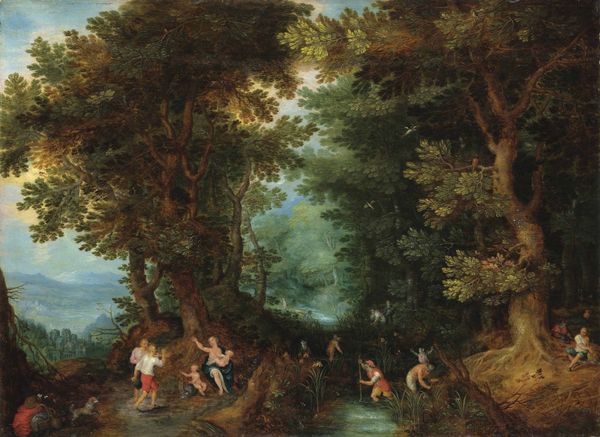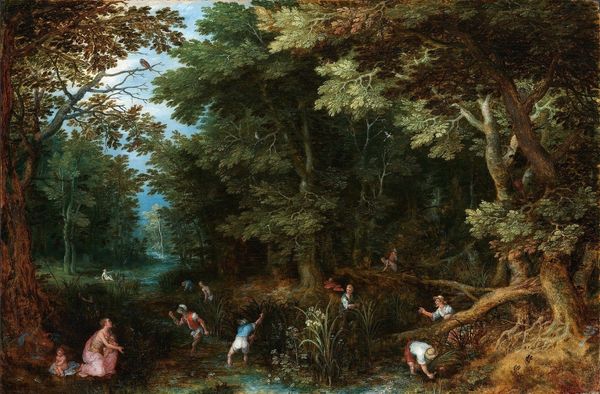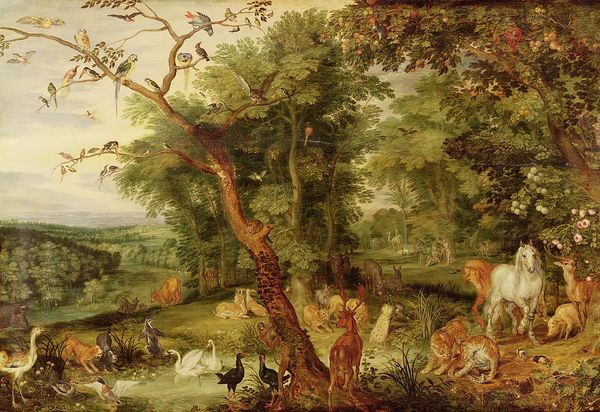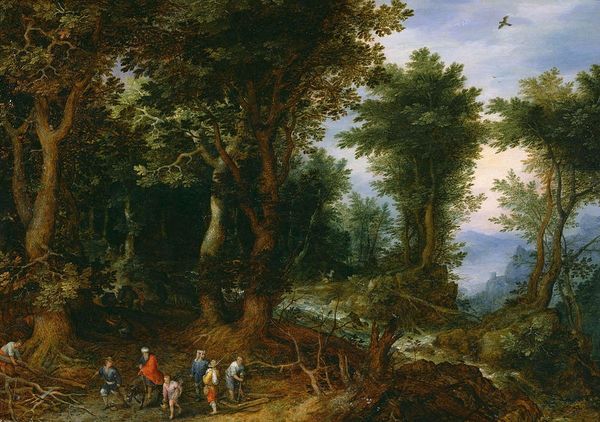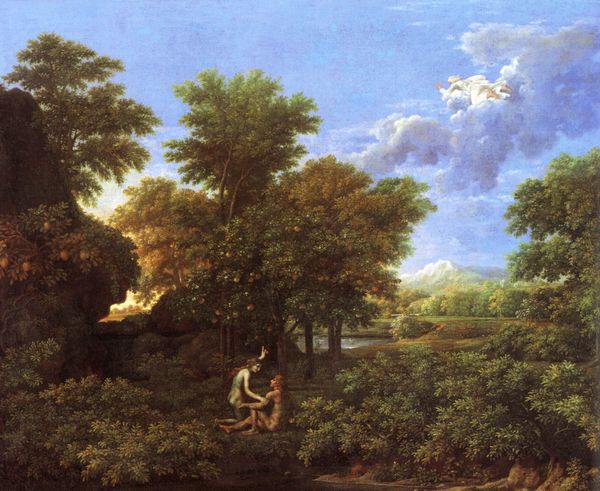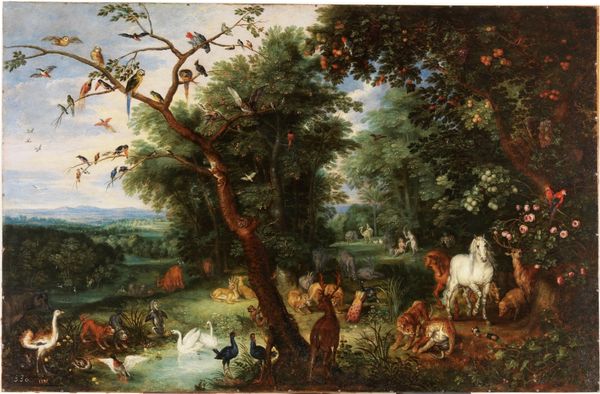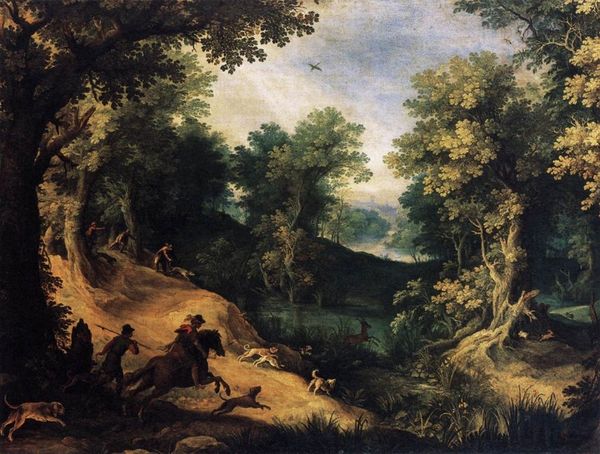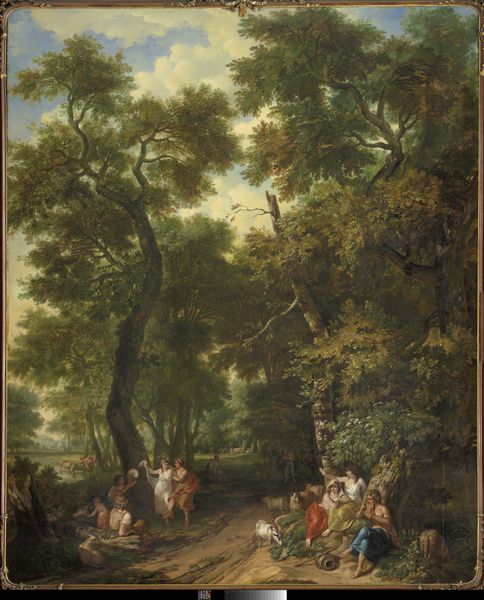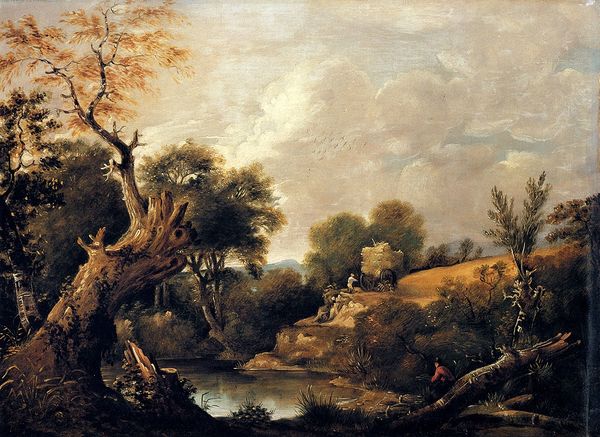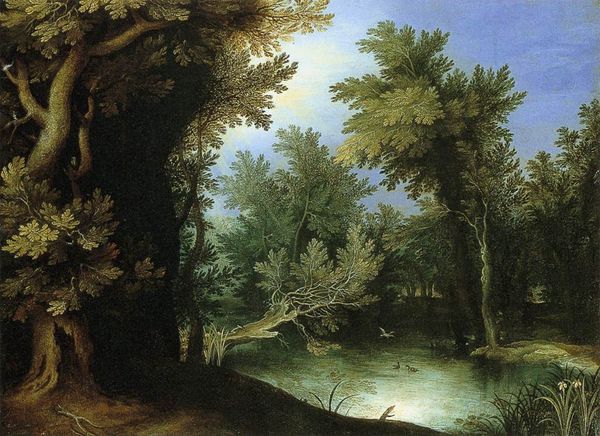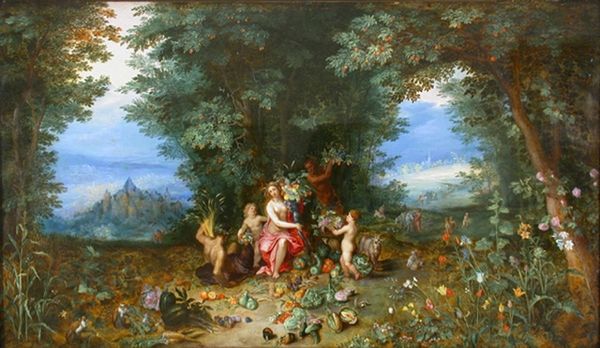
painting, oil-paint
#
baroque
#
painting
#
oil-paint
#
landscape
#
oil painting
#
mythology
#
genre-painting
Copyright: Public Domain: Artvee
Editor: We are looking at "The Mocking of Latona" painted in 1601 by Jan Brueghel the Younger, using oil paints. At first glance, the canvas appears split between these detailed forest textures up front and then distant blues. I am curious... How would you interpret the balance in this work? Curator: Well, let’s first consider the materiality of oil paint itself. Brueghel meticulously applies the pigment, achieving remarkable verisimilitude in rendering the flora. Notice how the artist manipulates light across the tree trunks. What sort of structural pattern emerges? Editor: There's definitely a verticality to the trees, which then transitions into this more horizontal band in the center... and eventually opens up into that bright sky. It's like the eye is lead through this organic gate almost? Curator: Precisely. The dense, almost claustrophobic foreground gradually yields to the atmospheric perspective in the background. How does that structural arrangement relate to the dynamism within the painting? Editor: It sort of pushes my focus into the action near the ground. Are those the figures referenced in the title of the work? Curator: It appears so. Consider how Brueghel’s formal choices amplify or perhaps even undermine narrative elements. The classical tale serves merely as pretext to exhibit the virtuosic ability to simulate the natural world with strokes of paint. Do you think the narrative drives our viewing experience, or does it supplement a structural appreciation? Editor: Hmm. The structure does dominate... Maybe the real story is how effectively Brueghel guides our eye. Curator: Indeed. Reflecting upon it now, that manipulation might represent the core meaning behind the artist’s labor. Editor: This changed the way I look at landscapes. I will keep a keen eye for these arrangements from now on!
Comments
No comments
Be the first to comment and join the conversation on the ultimate creative platform.
